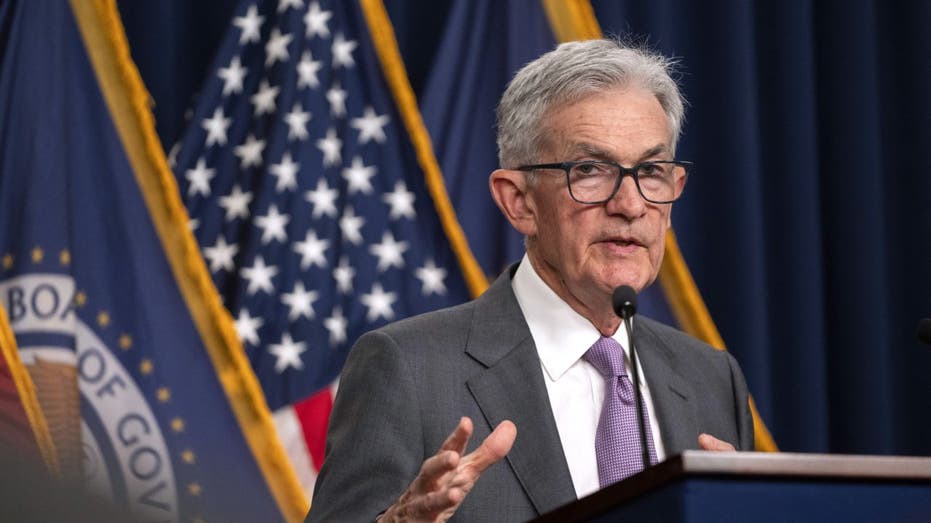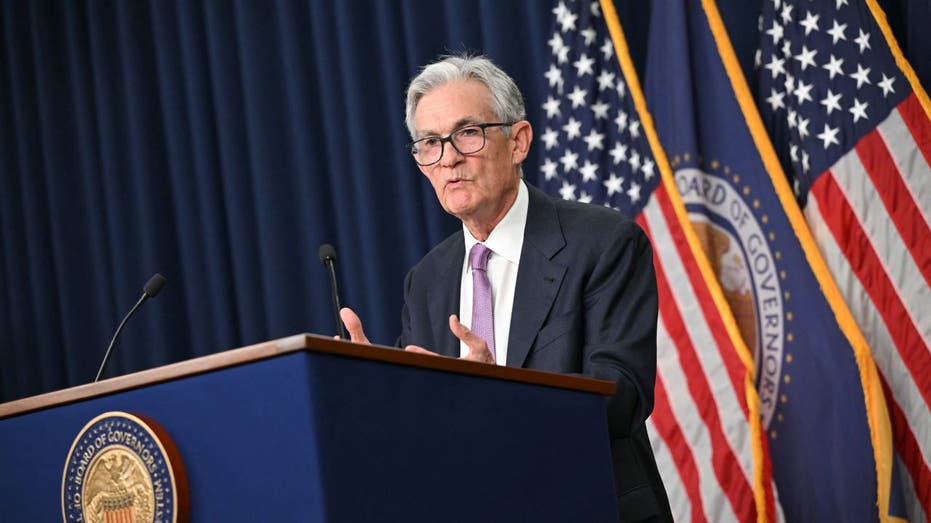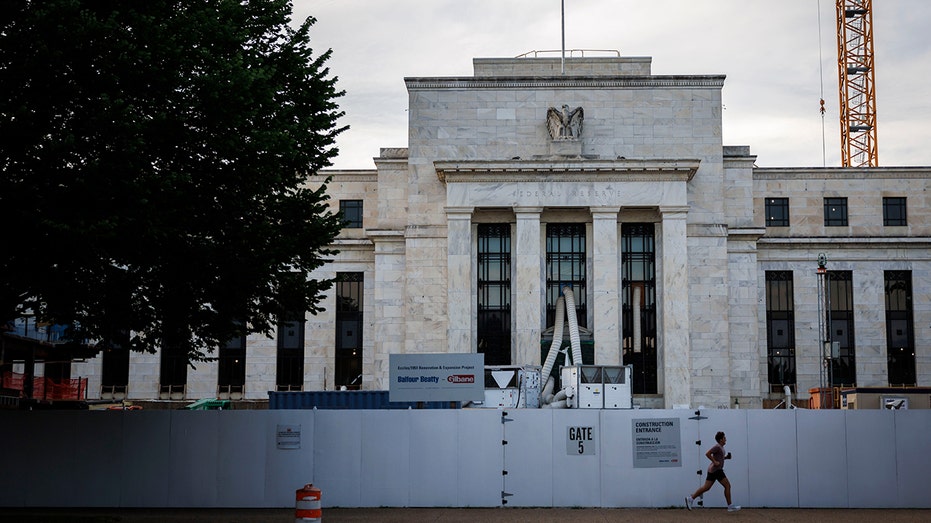Federal Reserve cuts interest rates by half-point; first rate reduction in four years
The Fed most recently cut rates in March 2020
Fed rate cuts are not 'magic bullets' that will fix the economy: Jim Thorne
Wellington-Altus Private Wealth chief market strategist Jim Thorne argues the Fed was late to cut interest rates and the private sector is in recession on 'Making Money.'
The Federal Reserve on Wednesday announced a long-awaited interest rate cut, lowering the benchmark rate by 50 basis points from what was the highest level in 23 years as the central bank eased borrowing costs following progress in the fight against inflation.
The Fed's first interest rate cut since March 2020 lowers the benchmark federal funds rate to a range of 4.75% to 5%.
Interest rates had been at a range of 5.25% to 5.5% since July 2023, the highest level since 2001, as the central bank monitored economic data for signs that stubborn inflation was trending toward its 2% target.
Recent months delivered signs of progress that inflation is heading toward the Fed's target, although the latest data showed it isn't quite there yet. Inflation slowed to 2.5% on an annual basis in August, down from 2.9% the month before and well below this inflationary cycle's peak of 9.1% in June 2022.
US ECONOMISTS SEND FED WARNING ON PRICE INCREASES AHEAD OF ANTICIPATED RATE DECISION: 'BE CAUTIOUS'

Fed Chair Jerome Powell announced the central bank's move to lower interest rates for the first time in four years. (Roberto Schmidt/AFP via / Getty Images)
Federal Reserve Chair Jerome Powell said in a press conference following the announcement that the central bank is focused on "achieving our dual mandate goals of maximum employment and stable prices for the benefit of the American people."
"Our economy is strong overall and has made significant progress toward our goals over the past two years," Powell said. "This decision reflects our growing confidence that with an appropriate recalibration of our policy stance, strength in the labor market can be maintained in a context of moderate growth and inflation moving sustainably down to 2%."
"I would say, we don't think we're behind. We think this is timely, but I think you could take this as a sign of our commitment not to get behind," Powell said of the decision to go with a 50-basis-point cut.
INFLATION RISES 2.5% IN AUGUST, LESS THAN EXPECTED
The chairman emphasized that the Fed will make decisions on a meeting-by-meeting basis going forward based on economic data and said, "We can go quicker if that's appropriate, we can go slower if that's appropriate, we can pause if that's appropriate. That's what we're contemplating."
He was also asked about the political implications of the interest rate cut given Election Day is less than two months away. Powell said the Fed's policymakers focus on how to best "support the economy on behalf of the American people" and noted that the Fed's actions mostly impact economic conditions with a lag after policy changes.
"I don't see anything in the economy right now that suggests that the likelihood… of a downturn – is elevated," Powell said in response to a question about whether the economy is vulnerable to recession. "I don't see that. You see growth at a solid rate, you see inflation coming down, and you see a labor market that's still at very solid levels."

Powell said the Fed is confident in the economy's progress in lowering inflation. (Mandel Ngan/AFP via Getty Images / Getty Images)
Powell previously signaled that the central bank didn't plan to wait for inflation to reach 2% to cut interest rates.
He explained in July that "if you wait until inflation gets all the way down to 2%, you've probably waited too long, because the tightening that you're doing, or the level of tightness that you have, is still having effects which will probably drive inflation below 2%."
A slowdown in hiring has raised concerns about the labor market and the economy potentially slipping into a recession, prompting speculation that the Fed could opt for a 50 basis point cut to interest rates.
FED'S ACTIONS SPOKE LOUDER THAN WORDS TO MARKETS IN FIGHT AGAINST INFLATION, RESEARCH FINDS
The central bank typically chooses to move forward with a smaller 25-basis-point cut at the start of a rate-cutting cycle, though it has made larger cuts when there is a higher degree of economic uncertainty.
It most recently opted for larger 50-basis-point cuts in March 2020 as the COVID-19 pandemic began, as well as in September 2007 amid the housing crisis and in January 2001 when the dot-com bubble burst.

The Federal Reserve previously signaled that policymakers wouldn't wait for inflation to hit 2% before cutting interest rates. (Ting Shen/Bloomberg via / Getty Images)
Markets fully priced in a 25-basis-point rate reduction ahead of the Fed's decision on Wednesday, although traders increasingly expected the Fed to cut rates by 50 basis points in the lead up to the announcement.
According to the CME FedWatch tool, the probability of a 50-basis-point cut rose from 25% a month ago to 64% the day before the Fed's decision.
Wednesday's rate cut decision is expected to be the first in a series of moves to lower interest rates. Prior to the Fed's announcement, markets expected the Fed to announce further rate cuts at its meetings in the months ahead, as the CME FedWatch tool sees a slightly more than 50% probability rates will be lowered to a range of 4.5% to 4.75% in November.
GET FOX BUSINESS ON THE GO BY CLICKING HERE
"The markets got what they wanted – a big first cut by the Fed," said Chris Larkin, managing director of trading and investing at E*TRADE from Morgan Stanley. "Beyond how hot or cold the economy runs, that may largely depend on what the Fed has to say about how fast and far it sees rates dropping from here."
Stocks responded favorably to the Fed's rate cut decision, with both the Dow Jones Industrial Average and the S&P 500 hitting all-time highs in the immediate aftermath of the announcement prior to Powell's press conference.
The Federal Reserve's next policy meeting will be held Nov. 6-7, right after Election Day on Nov. 5, while the final meeting of the year will be held Dec. 17-18.

